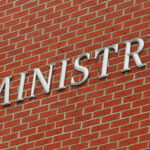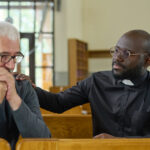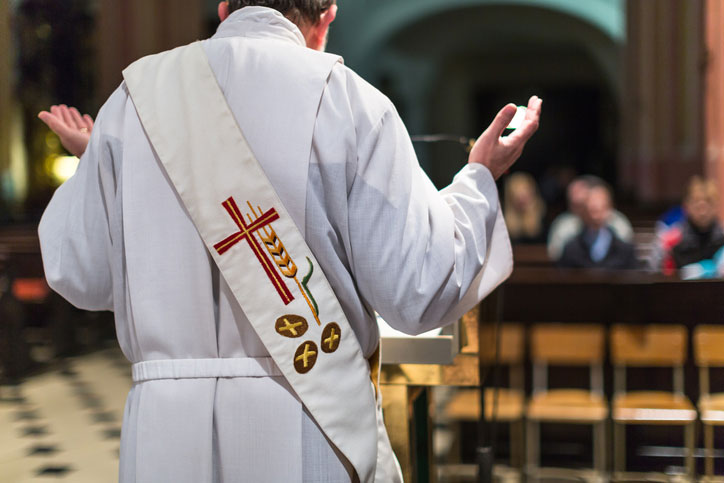
After Christ’s Ascension into Heaven, His followers multiplied and dispersed all over the earth. In the centuries that followed, denominations of Christianity formed their own belief systems. Through an abounding religious, cultural, spiritual, and political history, the Roman Catholic Church established itself as the largest Christian denomination across the globe.
Importantly, the Holy Trinity can be viewed as the central tenet for Catholics: the belief in the unity of the God the Father, His Son, and the Holy Spirit. The Church’s liturgical practices, parish priorities, and educational approaches can all be connected to this doctrine.
And in its educational tradition, Catholic universities and colleges apply a worldly, more contextual perspective in the way they prepare students. The word catholic means “universal,” and this attitude heavily informs the way many Catholic schools approach education.
With different sects that have different focuses and different communal leaders, Catholic higher education enjoys a rich service- and compassion-centered liberal arts tradition that promotes learning for both followers and those outside of the Church. Catholic university and college environments tend to support students from all walks of life as they become critical thinkers and community servants.
Explore a Christian Ministry Degree – Request More Info Today!
A Complete Guide to Catholic Universities
An Overview of Roman Catholic Religious Orders
Many religious orders in the Roman Catholic Church are centuries old. Most were even founded by the faith’s most venerated saints or their immediate followers. But no matter the order, each one is organizationally made up of devout Catholics called to live a consecrated life that follow specific vows — vows that align every aspect of their lives with Christ’s example.
These devoted people have a number of titles: monk, brother, nun, sister, or friar being some of the most common ones. To ensure their members embody these titles faithfully, Catholic religious orders often provide the education and training needed to join their ranks or become leaders in the larger framework of the Catholic Church.
These storied religious orders, as different sects within the Church, founded and continue to make up a large number of Catholic universities across the country. Here are the five most recognizable orders and how they fit into promoting Catholic education.
Jesuits
The Society of Jesus, whose members are called Jesuits, is one of the Roman Catholic Church’s most prolific religious orders. Under vows of poverty, chastity, and complete obedience to the Pope’s missionary directives, they travel the world spreading the Gospel wherever its light is needed.
This globe-trotting tradition started in 1540 when St. Ignatius of Loyola, a former Spanish soldier, and six like-minded Christians were allowed to be ordained as priests and go on missionary trips. Their zeal took them everywhere from Japan to Brazil.
Today, the Jesuits are perhaps most well-known for their work in Catholic schools. By their own estimates, there are about 2,300 Jesuit schools and partnering institutions in 70 different countries. They represent everything from primary schools to colleges.
But the Jesuits aren’t limited to teaching. In a statement, the order presents itself as a uniquely varied group whose members participate in almost every segment of modern society:
“We are pastors, teachers, and chaplains. We are also doctors, lawyers, and astronomers, among many other roles in Church and society. In our varied ministries, we care for the whole person: body, mind, and soul.”
Vincentian
Through His actions, sermons, and parables, Christ made one thing clear during His time on earth: those who serve the poor and suffering serve the Lord. In the Vincentian Family of Church organizations, that compassion is at the heart of everything.
The Vincentian Family isn’t a single order within the Roman Catholic Church. It’s made up of multiple branches that call on Catholics from all walks of life including men, women, laypeople, and those who take solemn vows. Some of their most central service-based endeavors include:
- Soup kitchens and food pantries.
- Missionary trips to the world’s poorest areas.
- Job placement programs.
- Second-hand stores.
- Utility bill payment programs.
- Permanent housing initiatives for the homeless.
But the branch most relevant to those seeking ordained priesthood would be the Congregation of the Mission, an order of priests and monks started in 1625 by Saint Vincent de Paul to advance issues of social justice.
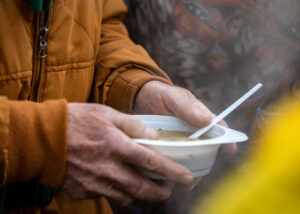 Along with taking vows of poverty, chastity, and obedience, Vincentian priests and brothers take a vow of stability. This is a lifelong pledge to serve their communities in spiritual and material matters.
Along with taking vows of poverty, chastity, and obedience, Vincentian priests and brothers take a vow of stability. This is a lifelong pledge to serve their communities in spiritual and material matters.
To support this endeavor, the Congregation guides initiates through a seven-year formation period that includes internal seminary classes, retreats, and the chance to work with other Vincentian family members. Vincentians often become teachers and skilled tradesmen who, like Jesus, spread the Gospel to the world’s most vulnerable people through words and direct action. This approach heavily influences the way Vincentian universities and colleges prepare their students.
Benedictine
Benedictine monks live a humble, communal lifestyle under a simple creed: Ora et Labora. This Latin phrase meaning “prayer and work” is a concise summary of the order’s foundational text: the Rule of Saint Benedict.
The Rule of Saint Benedict was written by the order’s founder Saint Benedict of Nursia in 516 AD. Some of the most important rules say Benedictine monks should:
- Take vows of obedience, stability, and continual conversion of manners — a vow to always seek spiritual and personal improvement.
- Cook, clean, garden, and take care of monastery grounds themselves.
- Always treat guests with the highest hospitality.
- Demonstrate zeal and cheer in all they do.
- Keep humble as a way to find eternal life in Heaven.
Some Benedictine monks work closely with local priests, organizing retreats, visiting the sick, and promoting the celebration of the sacraments. Others become priests themselves, administering the sacraments to brothers of the order.
But many Benedictine monks are skilled craftsmen who serve their monasteries and larger Catholic communities. There are also financial administrators and theologians among them. Through this multifaceted perspective, students in Benedictine-based or affiliated institutions receive a comprehensive, contextual education.
Lasallian
In the late 1600s, French scholar and priest Jean-Baptiste de La Salle saw a grim future for the country’s disadvantaged children. Born into aristocracy and highly educated, de La Salle took it upon himself to bring struggling teachers into his own home, sharing his educational expertise and spiritual warmth.
Together, he and his compatriots opened a school for poor French children in 1680. When their ranks swelled, they formed the Brothers of Christian Schools, an order now referred to as the Lasallian Brothers.
Though Lasallian Brothers take vows of obedience, chastity, and poverty, they are not often ordained priests. In fact, they take a lot of pride in being laymen who choose to devote themselves to Christian education and fellowship. When figuring out how to become a Catholic priest, men might feel more called to take this education-based route.
On this topic, the Lasallian Worldwide states:
“The Brother is a layman and does not aim at the priesthood, because his ministry does not involve carrying out the sacred functions of the liturgy or administering the sacraments. His mission consists in educating the pupils in a Christian way through an education which involves both profane and religious contents.”
 Today, there are over 1,100 Lasallian schools in 80 countries built for this purpose.
Today, there are over 1,100 Lasallian schools in 80 countries built for this purpose.
But providing such a robust spiritual and secular education requires preparation in and of itself. According to the Lasallian Region of North America, this formation process involves teaching new brothers about the order and helping them get the teaching credentials they need.
How to Enter the Priesthood and Become a Leader in Catholicism
In addition to the core belief in the unity of the Holy Spirit, the Catholic Church bases its teachings and worship practices on the Seven Sacraments.
What Are the Seven Sacraments?
- Baptism: To enter the Catholic Church and to follow all of the other sacraments, Catholics must be Baptized. This central act, which involves some form of submersion into water, absolves the initiate into the faith of their original sin.
- Confirmation: As a significant step after Baptism, the Sacrament of Confirmation equips Catholics with the gift of the Holy Spirit to serve Christ.
- Eucharist: At the apex of Catholic worship, the Eucharist is the symbolic acceptance of the Body and Blood of Christ at Communion.
- Confession and Reconciliation: The Sacrament of Reconciliation centers on God’s acceptance and forgiveness of a follower’s sins through confession and penance.
- Anointing of the Sick: Also known popularly as Last Rites, this sacrament offers an ill Catholic the opportunity to become spiritually healed.
- Matrimony: The Sacrament of Marriage is a sacred promise between a couple to maintain their union with each other and with God.
- Holy Orders: For men who are called to a life of spreading Catholic faith, the Sacrament of Holy Orders equips priests with the authority to administer each of the 7 Sacraments.
The sacraments are so central to the Church’s beliefs that it only trusts a group of ordained, well-educated, and spiritually fit men known as priests to carry them out. In short, priests are the connection between God and all of His children.
But according to the Vatican, today’s priests have their work cut out for them. In 2022, the Catholic World Report shared a Vatican statement saying the Catholic flock has grown to include 1.36 billion followers worldwide. Despite this growth, the priesthood lost 4,000 men in 2020.
So for Catholic men, there has never been a more vital time to consider priesthood. This is, of course, one of the most spiritually significant and consequential callings and should not be taken without much reflection.
Unlike other Christian denominations, Christ-like actions and deep Biblical knowledge aren’t the only requirements for ordained ministry in the Catholic Church. Priests must also be ordained by bishops during a sacrament called Holy Orders. Through this stringent process, the Church preserves priesthood as a vocation in line with the miraculous works of the Son of God Himself.
Explore a Christian Ministry Degree – Request More Info Today!
The Two Types of Catholic Priests
There are two types of priests in the Roman Catholic Church: diocesan priests and religious priests. Though their roles are often similar, both types live and work in different contexts. Understanding these differences is key to learning how to become a Catholic priest.
Diocesan Priests
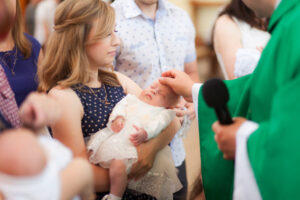 The diocesan priest is what most people are familiar with. They are assigned to a specific parish where they live, work, and lead Mass. Their parishes are made up of everyday Catholics, so outside of liturgical worship, they’re often responsible for meeting the community’s pastoral needs. These responsibilities include performing the sacrament of Marriage, organizing missionary events, and guiding the religious education programs of a connected Catholic school and/or nearby Catholic schools.
The diocesan priest is what most people are familiar with. They are assigned to a specific parish where they live, work, and lead Mass. Their parishes are made up of everyday Catholics, so outside of liturgical worship, they’re often responsible for meeting the community’s pastoral needs. These responsibilities include performing the sacrament of Marriage, organizing missionary events, and guiding the religious education programs of a connected Catholic school and/or nearby Catholic schools.
While diocesan priests usually tend to keep few earthly possessions, they don’t take vows of poverty. Instead, they make promises of obedience and chastity, meaning these kinds of priests can have personal belongings and receive a typically modest salary from their parish.
What Salary Do Diocesan Priests Make?
Diocesan priests’ salaries vary widely between parishes. Some are located in wealthier areas while others are firmly planted in the midst of abject poverty. A priest’s salary depends on the overall state of a parish’s financial situation.
But the Bureau of Labor Statistics gives a range of $30,450 to $80,920 for clergy member salaries, which include a priest’s salary. Other job sites may report higher, but this conservative estimate seems to be in line with the humble lifestyle priests are called to lead. It’s also important to keep in mind that diocesan priests frequently get a number of benefits from their parish like housing, medical insurance, and sometimes even a car to carry out pastoral duties.
Religious Priests
Religious priests belong to a specific order. In many cases, they become brothers or monks of their order before being ordained as priests. So while religious priests make promises of obedience and chastity, they also take the vows of their order. Most commonly, this includes a vow of poverty, which means they don’t take salaries and often live a communal lifestyle in a monastery.
Each religious order has its own focus. Some orders are dedicated to helping the poor while others are committed to spreading the Word through Catholic education. So along with carrying out their liturgical and sacramental duties, religious priests also take part in the efforts of their order. They might be teachers, missionaries, theologians, or anything else that progresses their order’s mission.
The Six Steps to Becoming a Catholic Priest
Though one’s quest to learn how to become a Catholic priest may lead to different avenues, there are generally six steps to consider.
1. Consider the Church’s Minimum Requirements
Before investigating how to become a Catholic priest, a person must make sure they meet the minimum requirements for ordination. The person must be an unmarried Catholic man in good standing with the Church. This means he must have completed the sacraments of Baptism and Confirmation and not have been denied ordination in the recent past.
The Program of Priestly Formation, an ordination guide presented by the United States Conference of Catholic Bishops (USCCB), states that candidates for priesthood must embody or develop excellence in four major categories:
- Human Formation. The ideal priest has a developed moral conscience, is a critical observer of human nature, and can establish deep relationships with others through Christ.
- Spiritual Formation. A priest should be obedient to the Word of the Lord, well-versed in Biblical and doctrinal affairs, and generally follow in the footsteps of Christ’s original apostles.
- Intellectual Formation. Aside from being spiritually strong, a priest must also demonstrate the ability to understand the tenets of the Catholic Church on a deeper philosophical level.
- Pastoral Formation. Priests must be shepherds who guide God’s children on a communal level through celebration of the sacraments, relevant homilies, and missionary endeavors.
However, the Program of Priestly Formation leaves some specific qualifications up to each diocese’s individual bishop. For instance, some dioceses require a man to be at least 25 years old to become a priest while some say 30. They may also require men to have been Catholic for a certain number of years or require them to pass physical and psychological examinations.
How Many Years of Study To Become a Catholic Priest
There isn’t one answer to “How long does it take to become a Catholic priest?” Seminary generally takes about four years to complete, but formation and discernment really don’t have a time limit.
For instance, if a person wishes to enter a religious order, he must first most likely take a few years of internal seminary courses focused on the order’s main teachings. Depending on the education involved, he may also have to attend seminary before becoming an ordained priest.
However, the Diocese of Helena, Montana, a community that requires priests to have graduate seminary degrees like most American dioceses, says it takes anywhere from five to seven years after completing undergraduate studies. This could change depending on how long a candidate spends in the contact period and how much education he needs as required by his religious order.
2. Form a Relationship With a Local Parish and Priest
Learning how to become a Catholic priest isn’t all about learning what the specific requirements are. It’s equally important to discern one’s own intimate calling from God. Spending time with local priests can be a great way to do that.
This is called the contact period. During this time, a potential priest can enter a sort of mentorship with priests, religious order leaders, and men already in seminary. They can help organize parish events, pray with their new spiritual circle, go on retreats, and even sit in on discussions between local Church officials.
3. Declare Your Calling and Begin the Application Process
After forming an informal relationship with Church leaders, hopeful priests who feel called to receive Holy Orders can then declare their intentions to their parish and mentors. These people can help the candidate start the official interview process.
The priest interview process varies by parish and religious order. However, vocational directors will most likely use the four areas outlined in the Program of Priestly Formation as a guide. In doing so, they may require the candidate to take physical and psychological tests as well as undergo multiple in-depth interviews.
4. Begin Seminary Studies (Potentially Under Parish or Religious Order Sponsorship)
 If a candidate for priesthood passes the interview process, he may then pursue seminary studies. This is when he will learn how to become a Catholic priest and sharpen his spiritual, intellectual, and pastoral skills.
If a candidate for priesthood passes the interview process, he may then pursue seminary studies. This is when he will learn how to become a Catholic priest and sharpen his spiritual, intellectual, and pastoral skills.
According to the Program of Priestly Formation, new seminary students don’t necessarily have to have a bachelor’s degree in a theology-focused field. However, the guidebook places much emphasis on candidates being educated in philosophy and the humanities. Knowledge of these fields can help priests form a deeper understanding of the Catholic Catechism.
Many American Catholic parishes require candidates to have Master’s-level seminary degrees. However, the Program of Priestly formation also acknowledges that not all communities have access to higher learning opportunities. In those cases, candidates may attend high school and undergraduate seminaries at accredited institutions.
But candidates don’t have to take this step alone. When a candidate declares his intentions, the parish or religious order may sponsor his education. The exact terms of this sponsorship will vary, but they often involve supporting the student financially, spiritually, and emotionally.
How Much Does It Cost To Become a Catholic Priest?
The education involved with how to become a Catholic priest is often extensive. At minimum, many Catholic dioceses in America require their priests to have Masters of Divinity from accredited seminaries. So how much does it actually cost to go to seminary and become a priest?
Seminary tuition varies a lot between schools. On ChristianMinistryEDU’s list of 50 recommended Master of Divinity programs, some of the least expensive programs cost about $40,000 to $70,000. However, top-ranked schools like Notre Dame cost upwards of $400,000 overall. In between, there are programs available at almost every cost point.
However, keep in mind that parishes and religious orders often sponsor all or part of a future priest’s education, living expenses, and other costs not included with tuition. They’re investing in the future of the Church. As a potential priest, you will be an integral part of that future.
When priests wish to become seminary professors or high-level ordained Church leaders, they may choose to pursue Christian doctorate degrees. Likewise, the Church may opt to cover all or part of these expenses.
5. Become a Transitional Deacon
After completing seminary, potential priests typically serve as transitional deacons in their parish for one year or more. Their primary purpose is to assist priests in all of their duties at the altar and beyond.
Deacons have the authority to baptize new Catholics, conduct funerals and marriage ceremonies, and proclaim the Gospel through homilies at Mass. But since they haven’t taken Holy Orders yet, they can’t hear confession or administer Last Rites. Due to their devotion and education, though, when a priest isn’t available for Mass, the USCCB says deacons can step in when needed.
Deacons also frequently take leadership roles in local Church ministry programs. They might teach Rite of Christian Initiation of Adults classes, become parish liaisons for charity programs, or generally meet the day-to-day spiritual needs of parish members.
6. Receive Holy Orders
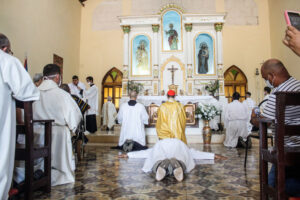 When for priesthood meet all requirements, they’re ready to receive Holy Orders. This sacrament traditionally takes place during a regular Sunday Mass with some key differences. The preparation starts days before.
When for priesthood meet all requirements, they’re ready to receive Holy Orders. This sacrament traditionally takes place during a regular Sunday Mass with some key differences. The preparation starts days before.
Immediately before receiving Holy Orders, the USCCB’s Rite of Ordination guidebook says candidates must go on a silent retreat of no less than five days. During the Mass itself, all liturgical readings, homilies, and psalmorial responses will be representative of this momentous occasion.
After the Liturgy of the Word, the actual ordination takes place. To start, a priest will profess to the bishop that he has no doubts about the candidates. The candidates themselves affirm their promises of obedience and chastity. Then, the entire congregation participates in a litany asking for God’s grace to be with the new priests.
Next, the bishop ceremoniously lays his hands on each candidate, spiritually vesting them with the power of the Holy Spirit. The bishop and his deacons then physically vest the new priests in the robes and stoles of their sacred vocation
Following a fraternal kiss between the bishop and the new priests, the bishop presents the men to the congregation as newly ordained servants of the Lord. As the first demonstration of their duties, the new priests administer the Eucharist. From that moment, the priests can now fully lead the parishes they’re charged with shepherding.
Called To Service But Not Priesthood: Other Ministerial Roles in the Catholic Church
In preparation for priesthood, candidates come into contact with every corner of the Catholic Church’s vast offices. In doing so, they may find that their true calling lies in another Christian job opportunity. This isn’t anything to be discouraged about. There are dozens of other ways a devout Catholic can serve the Church in an official capacity without becoming an ordained priest.
Permanent Deacons
Becoming a deacon is often part of the process of becoming a priest. But people can also become what are known as permanent deacons.
According to the USCCB’s 2022 report on permanent deacons, people in this position can be:
- Financial administrators.
- Ministry leaders for youth programs, homeless outreach, and more.
- Pastoral caregivers who attend to the overall needs of their parishes.
- In charge of new deacon formation programs.
The report states that there are currently about 21,000 active permanent deacons in the United States. Some of these people are full-time paid employees while others are part-time volunteers. Because this is a layperson’s role, deacons can be married.
Charities Director
The Catholic Church’s charity branch is massive. Some charity organizations are attached to schools and specific parishes, but there are also charity programs that stand alone as their own entities. Both types of organizations offer career opportunities in homeless outreach ministry.
Catholic Charities USA, the Church’s central charity office in America, raises millions of dollars every year to help millions of people overcome homelessness, food insecurity, and other harsh circumstances. Administrative jobs with Catholic Charities and its numerous chapters are open to lay men and women who feel called to bring Christ-like actions to their communities.
Music Director
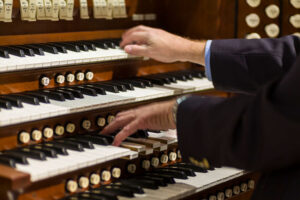 Music ministry is an essential part of the Catholic Mass and the general celebration of the Lord’s grace. Along with helping priests organize music for worship, music directors often guide volunteer choirs during Mass and hold music teacher positions at Catholic schools.
Music ministry is an essential part of the Catholic Mass and the general celebration of the Lord’s grace. Along with helping priests organize music for worship, music directors often guide volunteer choirs during Mass and hold music teacher positions at Catholic schools.
Teaching and Administrative Roles in Catholic Education
Today, the Catholic Church has thousands of Catholic schools across the world. Not just concerned with teaching Church doctrine, some of these institutions are among the best schools in their communities.
And like any other school, Catholic schools need teachers and administrators for every department. But they especially need school employees as faithful to the Lord as their ordained counterparts.
Start Discerning Your Calling and Find a Vocation with the Catholic Church
Figuring out how to become a Catholic priest isn’t often a straightforward process. Along the way, you may feel called to serve a particular community, join a religious order, or investigate the multiple educational paths available to priests today. Practically and spiritually, there are so many factors to consider.
But don’t let that intimidate you — let it fortify your spirit and open your heart to new parts of the Lord’s plan for you. As it says in Proverbs 18:15, “The heart of the discerning acquires knowledge, for the ears of the wise seek it out.”
Explore a Christian Ministry Degree – Request More Info Today!




